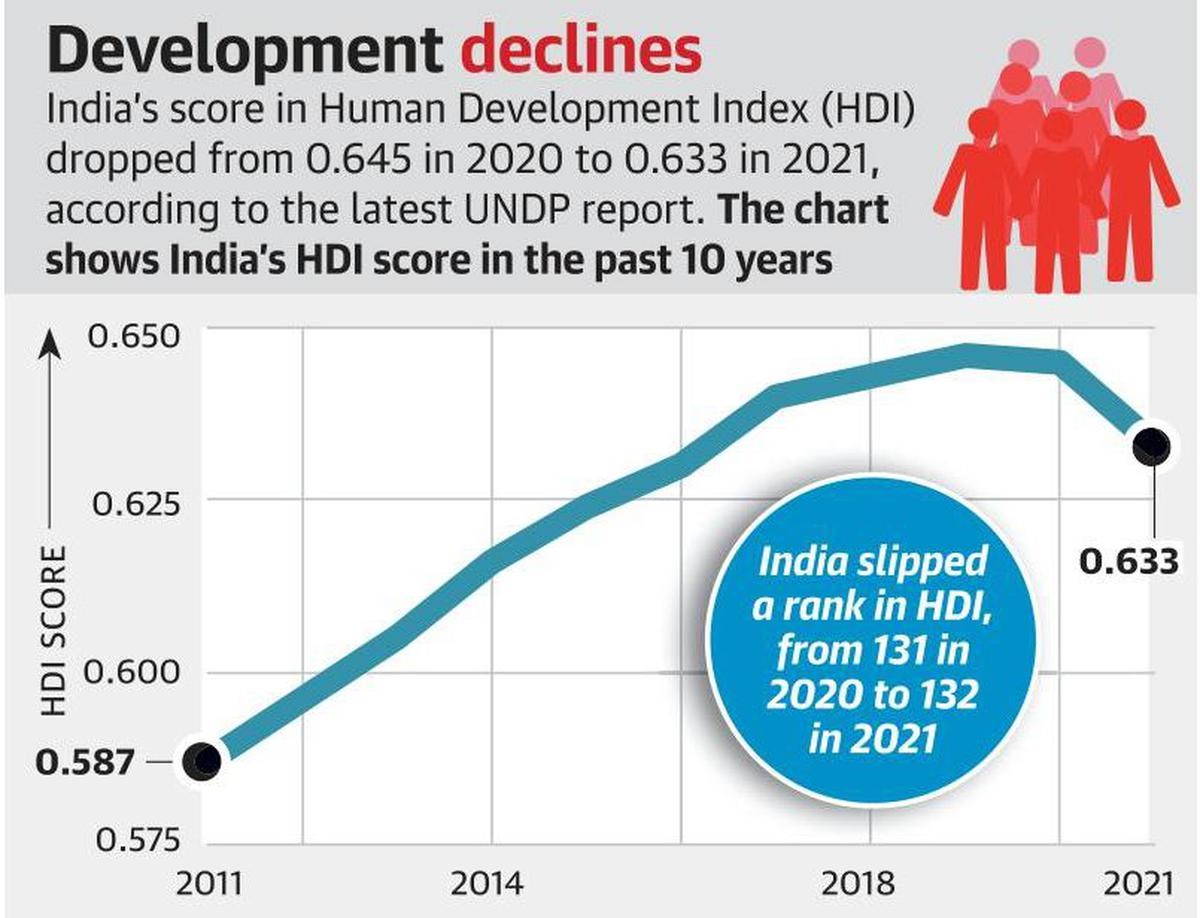Published on: September 14, 2022

UNDP’s Human Development Index
UNDP’s Human Development Index

Why in news?
India ranks 132 out of 191 countries in the Human Development Index (HDI) 2021, after registering a decline in its score over two consecutive years for the first time in three decades.
Highlights:
- The drop is in line with the global trend since the outbreak of COVID-19 during which 90% of the countries have fallen backward in human development.
- The Index is part of the Human Development Report 2021-2022 released by the United Nations Development Programme.
- The world over, nine out of 10 countries have slipped in their human development performance due to multiple crises such as COVID-19, the war in Ukraine and environmental challenges, indicating that human development globally has stalled for the first time in 32 years.
- The report notes that the uncertainty due to multiple global crises has fuelled support for polarisation in many parts of the world which is detrimental for democratic freedom and human rights.
- It identifies worsening mental distress since COVID-19 as another factor that can impede human development and suggests that stress, sadness, anger, and worry had reached record levels.
- On average, countries spend less than 2% of their healthcare budgets on mental health, which limits access to mental health services for citizens globally.
Parameters:
The HDI measures average achievement of a country in three basic dimensions of human development —
- a long and healthy life,
- education
- a decent standard of living.- It is calculated using four indicators — life expectancy at birth, mean years of schooling, expected years of schooling, and the Gross National Income (GNI) per capita.
Statistics:
- Ranking of countries over different years is not comparable. A large contributor to the HDI’s recent decline is a global drop in life expectancy, down from 72.8 years in 2019 to 71.4 years in 2021.
- India’s HDI score of 0.633 places it in the medium human development category, lower than its value of 0.645 in 2018,<SU>indicating a reversal in progress.
- Like global trends, in India’s case, the drop in HDI from 0.645 in 2018 to 0.633 in 2021 can be attributed to falling life expectancy at birth — 70.7 years to 67.2 years. India’s expected years of schooling stand at 11.9 years, and the mean years of schooling are at 6.7 years. The GNI per capita level is $6,590.
Gender inequality
- The COVID-19 pandemic has also exacerbated gender inequality, which increased 6.7% globally.
- India has, however, shown a slight improvement in its Gender Inequality Index value in the latest report as compared to the 2020 index (0.490 vs 0.493), after gender inequality worsened between 2019 and 2020 (0.486 vs 0.493).
-
The index measures inequality in achievement between women and men in three dimensions — reproductive health, empowerment and the labour market.

